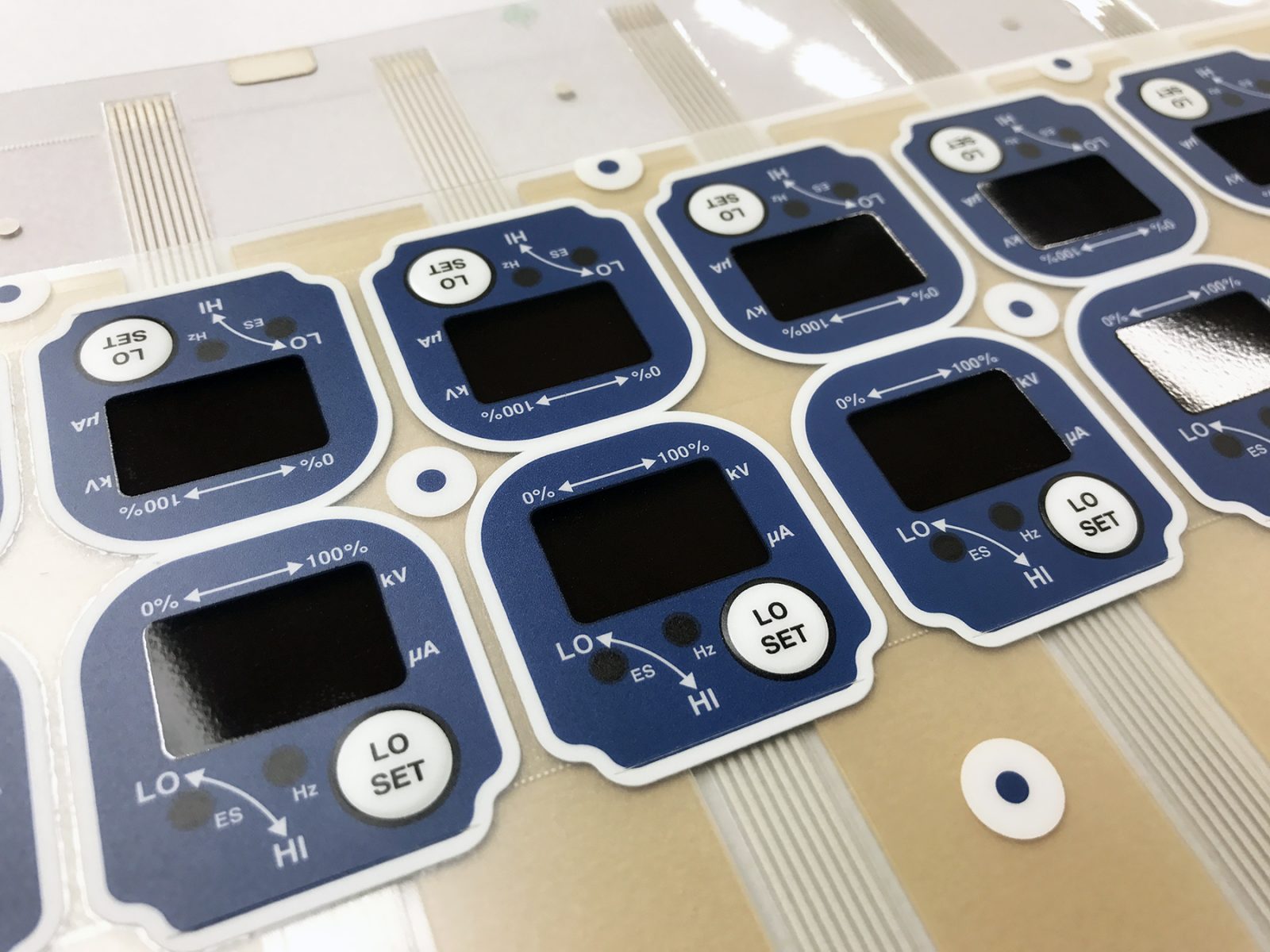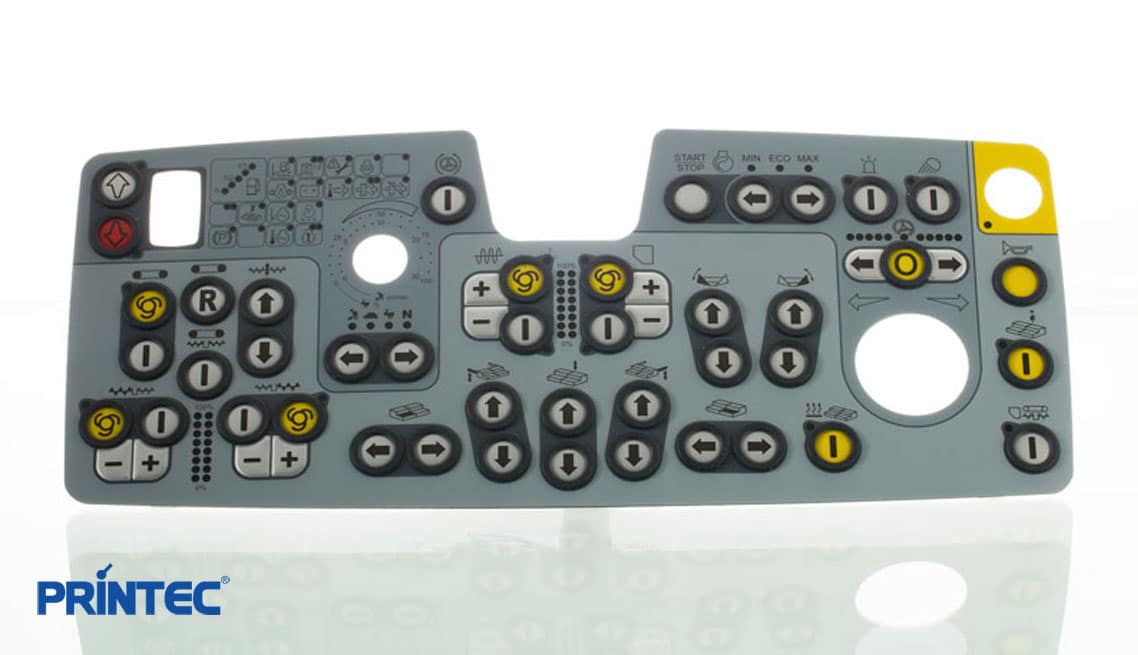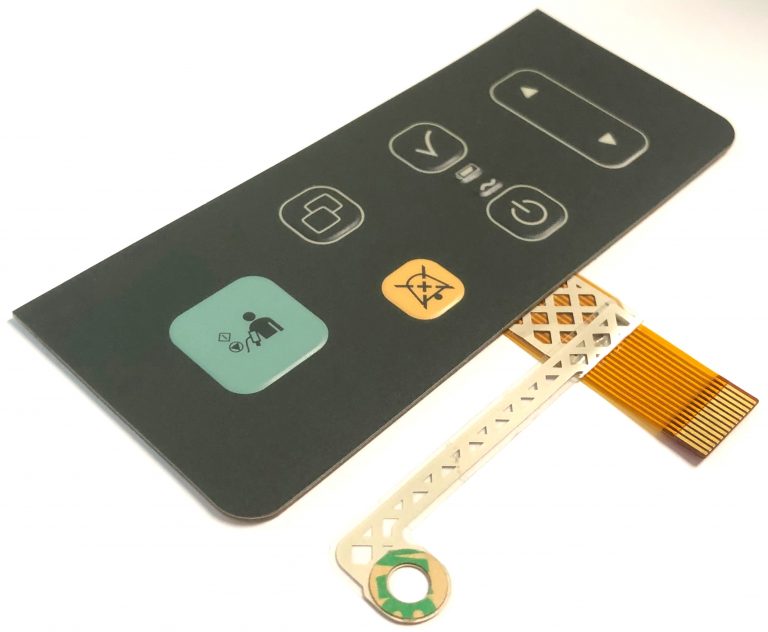Choosing the right membrane switch manufacturer can positively impact your product's quality.
What to Search for When Choosing a Membrane Layer Switch for Your Job
When you're selecting a membrane layer button for your job, numerous vital elements come right into play. You'll need to think of the products, design, and exactly how well it aligns with your brand. Sturdiness and functionality are essential, yet so is the credibility of the producer. Understanding these elements can help you make a notified decision-- one that balances high quality and expense effectively. Let's discover what you should think about to assure your choice meets all your job requires.
Comprehending Membrane Change Parts
When you plunge into the globe of membrane layer switches, it's vital to understand the key components that make them function. The switch usually contains three main layers: the visuals overlay, the spacer layer, and the circuit layer. The visuals overlay supplies the visual interface, presenting buttons and symbols you require for easy navigating. Beneath that, the spacer layer guarantees there suffices range between the circuit and the overlay, permitting the button to turn on without continuous pressure.
The circuit layer, frequently made from printed conductive inks, develops the electric pathways. When you press a switch, the circuit shuts, sending out a signal to the tool. Understanding exactly how these layers interact helps you select a membrane layer button that's trusted and fits your project demands. Pay attention to the thickness and product of each layer, as these variables influence longevity and performance in different environments.
Material Option and Its Effect
Choosing the right materials for your membrane switch can substantially influence its efficiency and long life. The choice of substratum, normally polyester or polycarbonate, influences sturdiness and versatility. Polyester is a lot more abrasion-resistant, while polycarbonate supplies far better quality and strength.
Next, consider the adhesive. It needs to withstand ecological elements like wetness and temperature level modifications. A strong adhesive assurances that your membrane layer button remains undamaged over time.
Do not ignore the visuals overlay. The printing approach utilized, whether silkscreen or digital, impacts the button's aesthetics and durability. Top notch inks will certainly resist fading and scratching, preserving an expert appearance.
Finally, think regarding environmental conditions. If your tool will certainly be subjected to rough chemicals or extreme temperatures, choose products developed to endure these challenges. Your selections in materials will ultimately identify the button's dependability and user complete satisfaction.
Design Factors To Consider for User Experience
Picking the appropriate products lays the structure for a successful membrane switch, but the layout additionally plays a significant duty in individual experience. You'll want to mirror on how the format affects functionality (membrane switch manufacturer). Keep switches and icons intuitive and well-spaced, making it simple for customers to browse without confusion

Shade and comparison are additionally important; assurance that your design is visually appealing yet still functional. High contrast aids customers easily determine switches, particularly in low-light problems.
Last but not least, assess the general visual. A smooth and modern-day style can raise customer perception and make your item much more attractive. Stabilizing performance with an engaging design will result in a much better individual experience and eventually, a much more successful item.

Environmental Aspects and Longevity
When picking a membrane layer switch, you need to think about just how it'll do in various environments. Aspects like temperature resistance, dampness and chemical exposure, and mechanical wear can substantially influence its durability. Recognizing these elements will help you choose a switch that stands up to your details problems.
Temperature Resistance Needs
As environmental problems can vary extensively, comprehending temperature level resistance is necessary for guaranteeing the durability of your membrane layer switch. Make sure to examine the specs of the products used in the button, like the adhesive and overlay, as they straight impact performance. By choosing a membrane layer switch with appropriate temperature level resistance, you'll enhance its life expectancy and keep functionality in difficult environments.

Moisture and Chemical Direct Exposure
Moisture and chemical exposure can considerably influence the performance and durability of your membrane button, so it's critical to understand the atmosphere in which it will certainly be made use of. If your task involves high humidity or exposure to liquids, try to find safety layers and sealants that can improve resistance to wetness. In addition, consider the sorts of chemicals your button may experience. Particular products can degrade when subjected to solvents, oils, or severe cleaners. Picking the appropriate materials, like polycarbonate or polyester, can assist stand up to these elements. Always consult the maker's requirements for chemical compatibility to ensure your membrane layer button maintains its performance with time. By focusing on wetness and chemical resistance, you can improve the durability of your switch in difficult atmospheres.
Mechanical Wear and Tear
While you might focus on attributes like aesthetics and performance in your membrane layer button, mechanical wear and tear can substantially influence its efficiency over time. Regular pressing can lead to deterioration of products, causing concerns like tactile comments loss or also switch over failure. Choosing a long lasting button warranties durability and integrity, avoiding pricey substitutes and downtime in your job.
Personalization Options for Branding
When their explanation it involves branding your membrane switch, personalization choices are essential. You can choose style components and shades that mirror your brand, in addition to specific logo positioning and dimension to boost presence. Additionally, choosing the right materials and structures can raise the general look and feel, making your product attract attention.
Style Aspects and Colors
A wide variety of design components and colors can make your membrane button not just useful however also visually enticing, boosting your brand name identity. When selecting shades, consider your brand's scheme; they ought to resonate with your audience and stimulate the appropriate feelings. You can additionally discover numerous finishes like matte or glossy to create different aesthetic effects. Do not ignore textures; including a responsive component can enhance user experience and make your switch attract attention. Take into consideration incorporating custom-made graphics or patterns that align with your brand message. By thoughtfully choosing design elements and colors, you not only develop a product that looks terrific yet likewise reinforces your branding regularly and properly.
Logo Design Placement and Dimension
After settling your style aspects and shades, the following step is to concentrate on logo design positioning and size. Your logo is an essential facet of your branding, so you'll desire it to stand out without frustrating various other style elements. Reflect on where your logo design will be most noticeable and impactful; usual positionings include the top or center go to this website of the switch.
Consider the size also-- as well huge and it could outweigh functional components, as well tiny and it can get shed. Go for an equilibrium that enables your logo design to be easily identifiable while maintaining the general aesthetics. Don't fail to remember to consider exactly how the logo design straightens with user communication. This interest to detail will certainly improve both capability and brand identification in your task.
Material and Structure Alternatives
Selecting the ideal products and structures for your membrane button can significantly enhance both its performance and aesthetic appeal. You'll want to evaluate alternatives like polyester or polycarbonate, as they use longevity and resistance to wear. The texture of the surface likewise plays an important duty; smooth finishes provide a sleek appearance, while textured surface areas can boost grip and responsive responses.
Customizing the materials and appearances permits you to reflect your brand name identity efficiently. You could select a matte finish to share sophistication or a shiny appearance for a modern touch. Do not fail to remember about color alternatives, as lively shades can make your switch attract attention, while soft tones can create an extra sophisticated look
Expense vs. High Quality: Finding the Right Equilibrium
When you're managing the choices for membrane layer switches, stabilizing price and quality can really feel frustrating. A lower-cost switch may save you cash upfront, but if it jeopardizes performance, you can face higher substitute prices later.
Search for makers that provide a good mix of cost and high standards. Study their online reputation and consumer testimonials to evaluate dependability. Occasionally, investing a bit extra in quality materials can save you from future migraines.
Likewise, take into consideration the lasting efficiency and warranty options. A somewhat a lot more pricey button with a strong service warranty could prove to be a smarter investment. Eventually, it has to do with locating that pleasant area where you fulfill your spending plan while guaranteeing your project's success.
Evaluating and Top Quality Guarantee Protocols
While you could locate the perfect membrane switch design, guaranteeing its top quality via strenuous screening methods is essential for long-term success. Start by validating that the manufacturer adheres to market requirements, such as IPC/WHMA-A -620, to guarantee a dependable item. membrane switch manufacturer. You'll wish to look for detailed screening approaches, consisting of environmental, mechanical, and electrical assessments
Make certain the switches undertake longevity screening, replicating real-world use to determine any type of potential failures. Take note of the producer's quality control procedure, which need to consist of routine evaluations and audits.

Do not neglect to ask for samples and perform your own tests to validate compatibility with your project. Think about just how commonly the manufacturer updates their methods; development in screening can lead to improved top quality. By focusing on these screening and quality control procedures, you'll raise the probability of an effective and resilient membrane layer switch for your application.
Often Asked Questions
For how long Does a Membrane Switch Normally Last?
A membrane layer switch commonly lasts anywhere from 1 to 10 million cycles, depending upon use and environmental aspects. You'll wish to think about your particular needs to guarantee it meets your long life needs properly.
Can Membrane Layer Switches Over Be Fixed if Damaged?
Yes, you can in some cases repair membrane switches if they're damaged, but it commonly depends on the extent of the damage. Small concerns may be fixable, while much more substantial damages normally calls for substitute for proper functionality.
What Are the Usual Applications for Membrane Layer Buttons?
Membrane switches are frequently utilized in devices, medical devices, and automotive controls. You'll find them in consumer electronics, industrial equipment, and even gaming consoles. Their flexibility makes them optimal for numerous customer interfaces and settings.
Exist Certain Qualifications for Membrane Layer Buttons?
Yes, there are certain certifications for membrane buttons. Search for UL, CE, and RoHS certifications to guarantee safety and compliance. These qualifications show the button satisfies market standards for quality and ecological security.
How Do I Guarantee Proper Installation of a Membrane Switch?
To assure correct setup of a membrane button, clean the surface completely, straighten it carefully, and apply even pressure. Adhere to maker guidelines for sticky curing time to make the most of longevity and functionality.
Verdict
When picking a membrane switch for your job, maintain these key aspects in mind: prioritize durable products, emphasis on user-friendly layout, and consider personalization for your brand name. By meticulously assessing these aspects, you'll ensure your membrane layer switch not only fulfills your job needs explanation however additionally boosts user experience and mirrors your brand identification successfully.